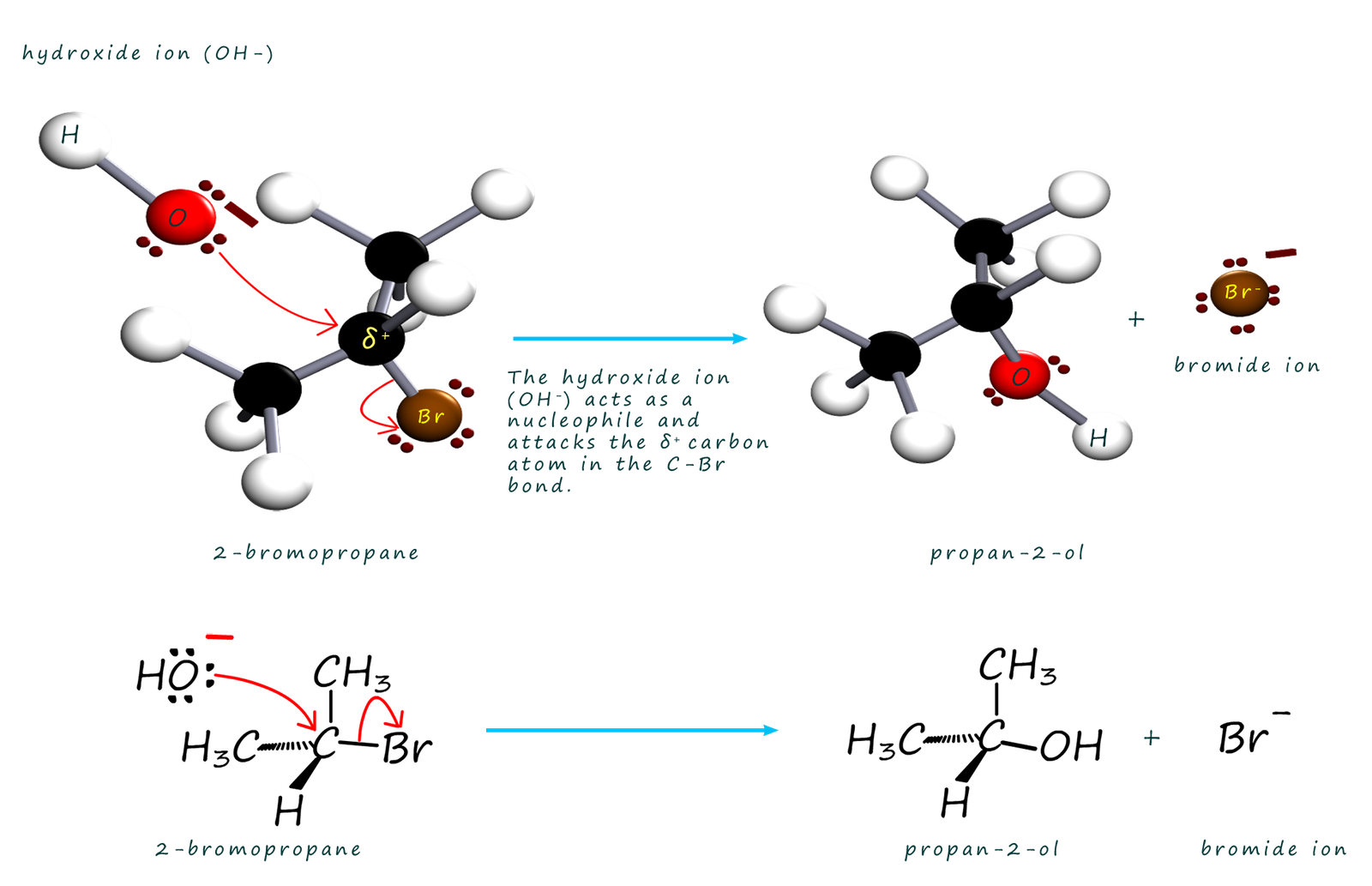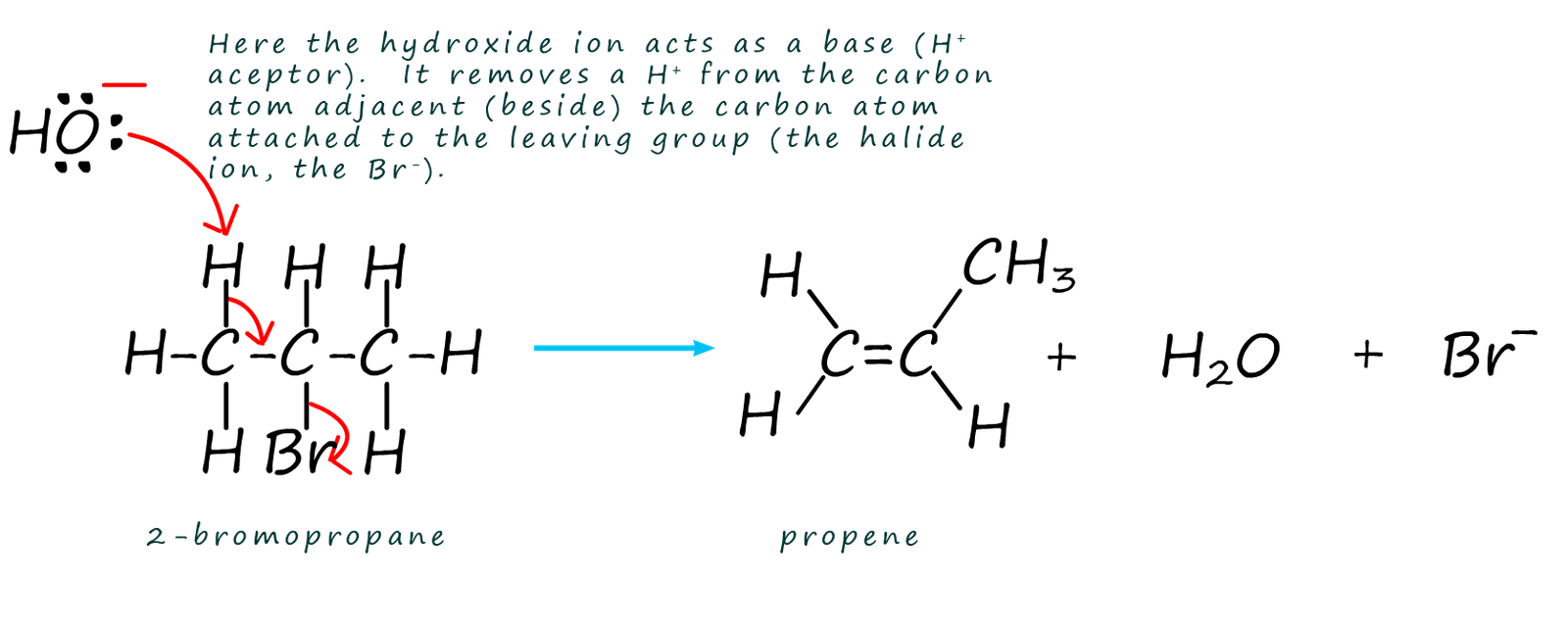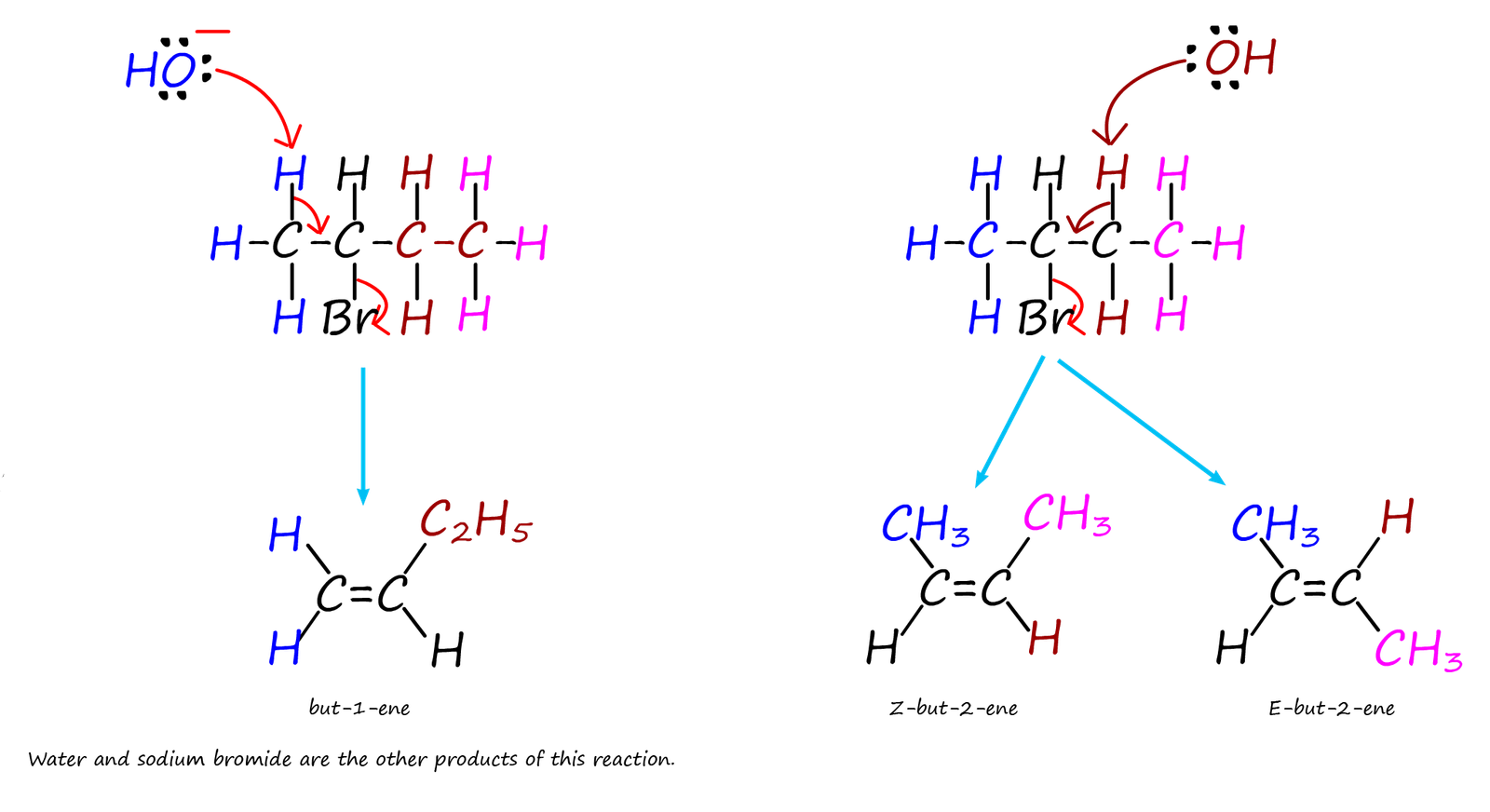

Note: Before reading this page make sure you are familiar with nucleophilic substitution reactions involving halogenalkanes, if you need a quick recap click on the links above.
Alcohols are formed when halogenalkanes are warmed with aqueous solutions of sodium hydroxide or potassium hydroxide. You are probably familiar with potassium and sodium hydroxide from any work you have done on acids and alkali where the sodium hydroxide and potassium hydroxide would have been used as a base (a H+ acceptor). However the hydroxide ion (OH-) can also behave as a nucleophile. There are many similarities between nucleophiles and bases, for example they both possess lone pairs of electrons for one. Normally strong bases are good nucleophiles and vice versa. However with sodium and potassium hydroxide we can alter the reaction conditions to "make it" behave as a base or a nucleophile.
If a halogenalkane is warmed with the strong base sodium or potassium hydroxide that has been prepared by dissolving the base in water to form an aqueous solution of sodium or potassium hydroxide then the hydroxide ion in this case tends to act as a nucleophile, as shown in the image below. Nucleophilic substitution reactions using halogenalkanes and hydroxide ions results in the formation of alcohols, this is outlined in the image below:

However if the strong bases potassium or sodium hydroxide are dissolved in a hot ethanol solution to form an alcoholic solution of the base then a different type of reaction takes place, this reaction is called an elimination reaction and here the hydroxide ion acts as a base (H+ acceptor) and not a nucleophile. This elimination reaction occurs as a one step process with no intermediates being formed, there are a few key features of this elimination reaction you should be familiar with:

In the example above using 2-bromopropane, a symmetrical
halogenalkane molecule it would not have made any difference to the
final product if we had removed a hydrogen atom from the carbon atom on the last right hand carbon atom in the
halogenalkane molecule as opposed to the one on the
left which is shown above. In either case the final product would still have been propene.
However if we had used an unsymmetrical
halogenalkane then more than one product would have been obtained.
As an
example consider the products formed from the reflux reaction of 2-bromobutane with hot alcoholic potassium hydroxide (recall
that these conditions are ideal for an elimination reaction).
It is a bit trickier to predict the products of elimination reactions than with nucleophilic substitution reactions. However what we can say is that elimination reactions generally give mixtures of products, for example consider the base induced elimination reaction of 2-bromobutane (an unsymmetrical halogenalkane),with alcoholic potassium hydroxide solution as shown below. Now the hydroxide ion (the base) can in theory remove any of the hydrogen atoms attached to a carbon atom adjacent or next to the leaving group (the halogen), this means that all the blue hydrogen atoms and all the brown hydrogen atoms in the 2-bromobutane molecule shown in the image below can be removed by the basic hydroxide ion. This will lead to a mixture of products as shown.

The reaction may give a mixture of products but we can say with confidence that the more substituted alkene will be the
major
product of the reaction, so in the example above the but-2-ene is the alkene with the more alkyl groups attached
to the C=C so
it will be the main product of this particular reaction.
However as well as elimination reactions taking place it is highly likely that
some nucleophilic substitution reactions will also take place, especially since we are using a secondary halogenalkane molecule and this
will unfortunately result in additional products being formed. Elimination reaction work "best" with
tertiary halogenalkanes where the reaction produces almost
exclusively alkenes, recall that elimination reactions generally do not take place
with primary halogenalkanes, substitution reactions take place instead and secondary halogenalkanes tend give a mixture of
elimination and substitution products - not ideal really!
However the reaction conditions also play a part in deciding whether the reaction will be a
nucleophilic substitution
or an elimination reaction: